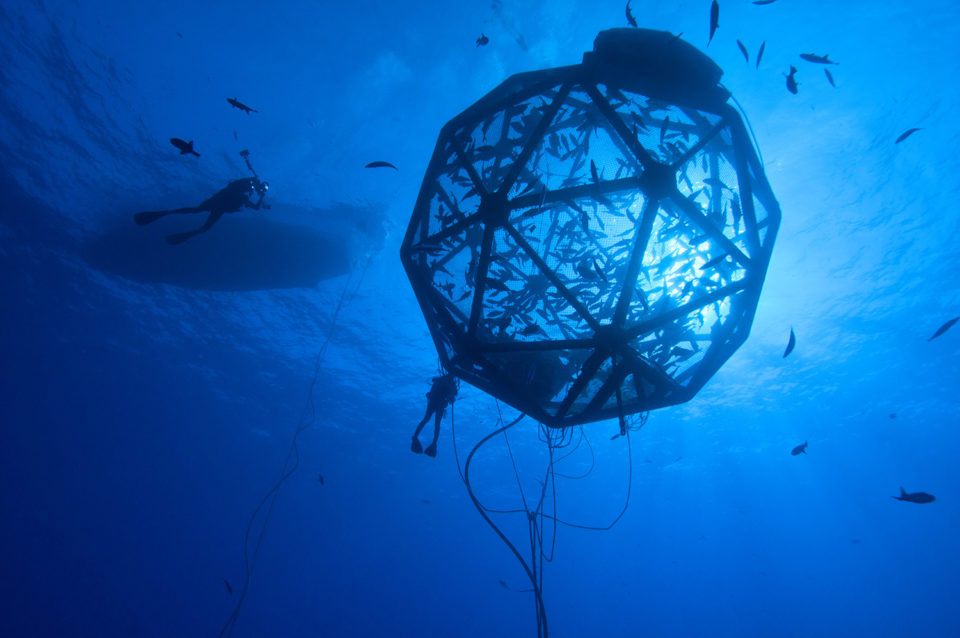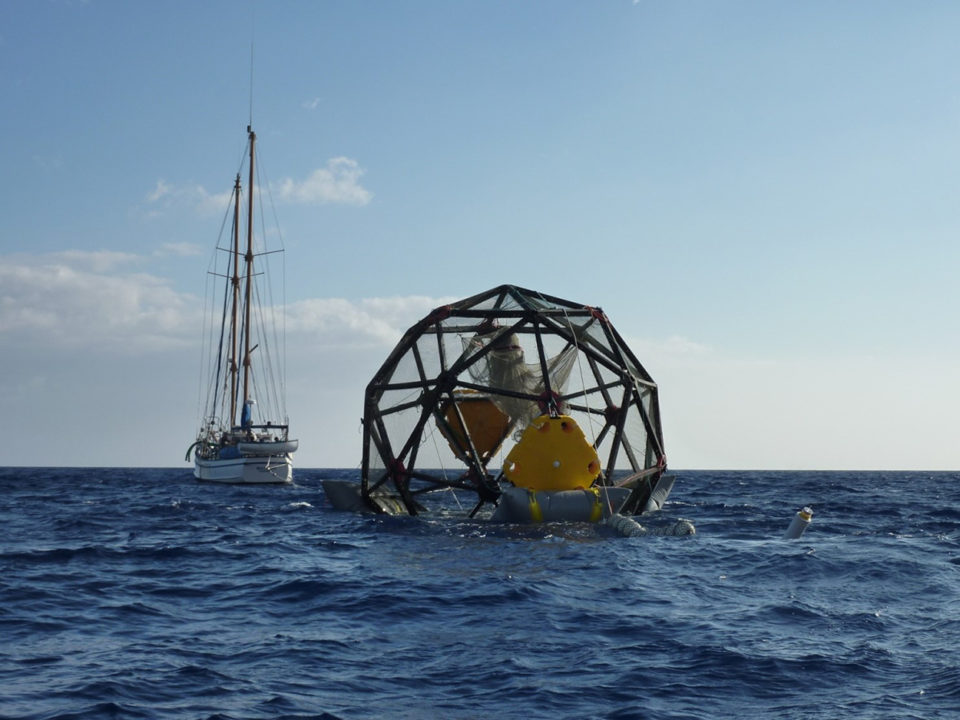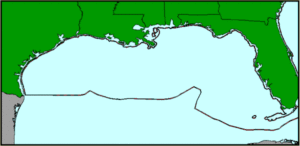Ocean Stewards’ Neil Sims lays out steps to build a thriving industry

The Ocean Stewards Institute has always seen itself as an agent of change. We have long seen the need for expanding seafood production globally, and we don’t believe that we should be limited by the literal or figurative blue horizon. We want to go beyond, in every sense of the word. We believe that offshore aquaculture is the most scalable, environmentally responsible means available for growing great fish.
So why aren’t we there yet? And if we’re not there, then why aren’t we trying harder? What’s wrong with us?
But maybe the problem isn’t us. Maybe the government is the problem! (There’s a great tradition in America of blaming the government for all that ails.) Governments – like any systems – are never perfect, and they can always benefit from a little tinkering, or in some cases, wholesale change.
The challenge is how do we know when we need to change, and then how do we make that happen. And what does this all imply about the prospects of growing fish at sea?
Without comment on any of the other various policies of the new federal administration, it is refreshing to see our government welcoming comments from any and all on how they might better serve us, the people. The government is itself asking if government is the problem, and if so, what might they change?
Clearly, change is needed. The current national seafood trade deficit is running over $14 billion annually. More than 90 percent of the seafood that we eat is flown or shipped in from other countries. That galls an administration that trumpets American productivity, and which is striving to create more American jobs. The United States lays claim to the most expansive Exclusive Economic Zone (EEZ) on the planet. How curious, then, that not a single fish has yet been commercially grown in U.S. federal waters. That really does need to change!

Marine aquaculture could be a shining example of American exceptionalism … except … “offshore” aquaculture has been largely offshored. This has almost felt, to some of us, like a deliberate federal government policy to discourage a domestic industry and instead push it off to other countries: saying, perhaps, “let them handle the headaches of permitting and monitoring.”

If that sounds like an absurd claim, please consider that the United States has developed much of the technology for offshore aquaculture – both sophisticated submersible net pen systems, and biological innovations that allow hatchery culture of a range of valuable marine fish species.
Moreover, the United States grows much of the soy and other agricultural grains that could be used to feed these fish; soy-fed fish could feed Americans, and at the same time assuage environmental concerns over the impact of aquaculture on “forage fish” stocks (such as sardines, anchovies, etc.). The United States also provides much of the entrepreneurial initiative and investment required to grow a challenging, capital-intensive new industry. However, most of these innovations, feedstuffs, entrepreneurs or investment funds are currently being exported to projects elsewhere – primarily in Latin America, the Caribbean and Asia. It certainly has the appearance of being a conscious, willful attempt to outsource an industry to overseas producers.
Growth of offshore aquaculture in U.S. federal waters had been stalled, initially, by the lack of any enabling regulatory framework. The National Aquaculture Act of 1980 was eloquent in its exhortations, but completely ineffectual. It was not until January 2016 that NOAA adopted a rule that finally provided a pathway for permits for aquaculture in federal waters in the Gulf of Mexico. Yet over the intervening 18 months, up to now, not a single project applicant has (to our knowledge) taken even an initial step down that path. It is a foreboding and untraveled trail, with all sorts of agencies lurking, waiting to assert their authority.
Given the absence of both significant and cumulative long-term environmental consequences, the risks of short-term impacts, naturally remedied by time, are far outweighed by the pressing need to facilitate growth and innovation in American aquaculture.
The NOAA rule itself was not heartening; there were limits on total fish production; minutiae over fish genetics; and set-in-stone rules for interaction between fish farms and fishing interests that seemed designed to guarantee that aquaculture proponents would be pilloried at their first public meeting.
There were also overlapping, confounding regulations and regencies: the Environmental Protection Agency’s NPDES regulations, the Army Corps of Engineers Section 10 permit (which seeks input from every other Federal agency that feels they might be affected in any way), along with State Coastal Zone Management obligations. And then the oil or gas industry was granted effective veto rights over any proposed aquaculture operation, if it might conflict in any way with any current or future energy industry needs. Can you imagine anyone willing to step forward into those maws?
So clearly, something has to change, if NOAA hopes to encourage rather than to discourage aquaculture in U.S. waters, and if the administration truly wants to stem the steady stream of our knowledge, investment and innovation overseas. There are two ways that change might be brought about: legislation and regulation.
The Magnuson-Stevens Fishery Management and Conservation Act is due for reauthorization, and there are some initiatives afoot to put forth amendments to give more support for aquaculture. These may be helpful, but the possibility exists that they could badly hurt our fledgling domestic industry. The administration’s call for recommendations for regulatory reform therefore was heartily welcomed. Here, government was asking we, the people, what might they do better. And with the repeated, judicial affirmation that under Magnuson aquaculture is indeed fishing, then changes to regulations might be all that we truly need.
The Ocean Stewards therefore proffered five broad areas where current regulations might be amended to help offshore aquaculture come home to America.
Designate NOAA as the lead federal agency for any and all applications for aquaculture activities in U.S. waters.
The lack of a designated lead agency for aquaculture has resulted in regulatory gridlock. The Rose Canyon Fisheries project off the coast of California, for example, has floundered about for years, while NOAA, EPA and USACE strived to determine who should take the lead agency role for the environmental reviews. The Ocean Stewards are urging NOAA to accept this responsibility for all aquaculture projects, by coordinating the project review process, and leading the implementation of the following recommendations.
NOAA should set up a Geographical Information System (GIS) that provides guidance to offshore aquaculture proponents (both commercial fish farmers and researchers) for preferred ocean areas (Preferred Offshore Waters for Aquaculture, or POWA).
NOAA needs to make GIS information on ocean use and oceanographic factors readily available to the public, and to aquaculture project proponents. The GIS should indicate POWA areas where offshore aquaculture projects would not significantly conflict with other ocean user-groups, and would represent no significant risk to the existing marine environment. The GIS database should describe parameters for each POWA, such as: minimum water depth; substrate type; distance from any Essential Fish Habitat or sensitive habitats; and potential conflicts with other user groups (transportation, oil and gas extraction, underwater telecommunication cables, etc.).
NOAA should conduct an overarching EIS for a range of aquaculture activities in the POWA areas described within the GIS as suitable for aquaculture, to define the operational parameters under which projects could expect rapid approval.
NOAA should compile an EIS that stipulates the provisions by which an aquaculture project proponent must abide, to be able to obtain approval in a timely manner in the POWA areas described above. To prevent such a programmatic EIS from falling into a black hole, as has happened with the California aquaculture permit process, NOAA should be instructed to complete this process within 12 months. This EIS should include review by EPA and USACE, so that it has broader agency buy-in. The idea here is that if an offshore aquaculture project is proposed which falls within these stipulations, then it would be considered to be covered by the prior EIS, and further NEPA review would not be required by NOAA, EPA or USACE. This pre-approval by NOAA, EPA and USACE would only relate to projects with specifically-defined characteristics (e.g. species cultured; volume of fish cultured; amount and type of feed provided; mooring and net pen engineering pre-requisites) and for specific areas (POWAs identified in the GIS, described above). If an applicant meets these operational stipulations, then an individual aquaculture permit could be granted by NOAA alone, without additional review by EPA and USACE.
Set a 180-day limit on NOAA’s review of commercial aquaculture applications.
Time and money … any offshore fish farming proponent usually has very little of either. And it is almost impossible to raise the money for an offshore project if you do not have the permit. The Stewards therefore suggested that to prevent any bureaucratic stalling, a 180-day clock be established for NOAA’s permit processing. There is already a useful precedent for this in Hawaii, where if the state’s Land Board does not make a decision on any Conservation District Use Application within 180 days, then the permit is automatically granted.
Other agencies (EPA and USACE) might then have an additional 90 days to review NOAA’s decision, and accept or reject the application for the other relevant permits (NPDES permit and Section 10 permit).
Establish a framework for expeditiously granting Experimental Aquaculture Permits (EAPs) in Federal waters (3 – 200 nm offshore), under the existing Exempted Fishing Permit regulations.
Over on the other side of the wall, the Mexican government helps foster innovative aquaculture through what is called a “Fomento” permit; designed, as a tool to, well, foment. The idea is that experimental offshore aquaculture permits should be readily available, to encourage innovation and experimentation.
We want to go beyond, in every sense of the word. We believe that offshore aquaculture is the most scalable, environmentally responsible means available for growing great fish.
There is sound science in support of such a measure: all the available evidence indicates that so long as an aquaculture project is small in scale, and cultivating species that are native to the area, and so long as no vulnerable habitats are located within the immediate vicinity, then no significant, lasting impact can occur to offshore waters or substrates. Once the fish are harvested, and the experimental structures are removed, then the area generally returns to its pre-impact state within six to 12 months. Given the absence of both significant and cumulative long-term environmental consequences, the risks of short-term impacts, naturally remedied by time, are far outweighed by the pressing need to facilitate growth and innovation in American aquaculture.
The Stewards therefore proposed that NOAA should establish regulations to allow expedited granting of Exempted Fishing Permits for aquaculture projects that are (a) temporary, (b) small-scale (c) non-commercial, and (d) located in federal waters, over 3 miles offshore. Where is there any possible downside to this step? We suggested that – in the same time-conscious spirit of the above recommendation, a limit of 30 days should be set for NOAA to complete the review of such an application.
We believe that these steps would enable innovative, sustainable offshore aquaculture to flourish in U.S. waters. This could help reverse the imbalance of seafood trade, revitalize working waterfronts, create high-paying jobs in the U.S. aquaculture sector and seafood processing sector, and increase the quality and availability of healthful, domestically-grown seafood for American consumers.
Author
-

Neil Anthony Sims
Co-CEO of Kampachi Farms LLC and founding president of the Ocean Stewards Institute, Neil Anthony Sims is a marine biologist (B.Sc. James Cook University; M.Sc. University of New South Wales), with a professional commitment to "softening mankind's footprint on the seas." He has been based in Kona since 1990, first working in pearl oyster hatchery development and pearl farming throughout Hawaii, the South Pacific and Southeast Asia. He and Dr. Dale Sarver founded Kona Blue Water Farms in 2001. He founded Kampachi Farms with Michael Bullock to continue focusing on the global need for expanded production of high-value, marine finfish, and pursuit of "next generation" technologies, including: remote offshore culture systems, more sustainable and scaleable feeds, and new species.
Tagged With
Related Posts

Responsibility
Do you know offshore aquaculture when you see it?
Researchers have determined that a definition of “offshore aquaculture” was necessary to critically assess the impacts and benefits of moving fish farming operations “slightly farther and slightly deeper” out to sea.

Responsibility
Going deep on offshore aquaculture
Open-ocean aquaculture, the “new kid on the block” in the rapidly growing aquaculture industry, was examined at a California Academy of Sciences event. New contributor Twilight Greenaway reports.

Innovation & Investment
Aquaculture Exchange: Daniel Benetti
University of Miami professor says the U.S. seafood marketplace needs to embrace 'plate-sized' fish if a domestic aquaculture industry is to become sustainable and profitable.

Innovation & Investment
Out of sight, not out of mind
Moving aquaculture offshore could spark a global production boost needed to meet growing demand for protein. Producers and investors, however, are wary of the challenges, cost and regulatory red tape. One patient U.S. entrepreneur, however, is undaunted.

